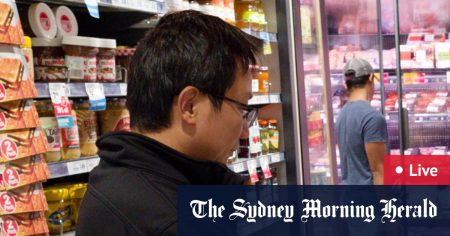The aerial images of Docklands in the 1990s portray an empty, derelict wetland surrounded by rusty sheds and boats. Despite its potential, the suburb has never reached its full potential, from hosting underground rave parties to being a serene wetland for native wildlife. A $10 billion makeover aimed to transform Docklands into a sparkling city, but it became the suburb Melbourne loves to hate due to a series of setbacks like the closure of Central Pier and the impact of the COVID-19 pandemic.
Former premier Jeff Kennett once described Docklands as a slow-blooming plant, while critics like Professor Terry Burke suggested starting over. Despite the negative reputation, many residents appreciate Docklands for its waterfront views, restaurants, and proximity to the city. However, without a clear plan for the future, there is mounting pressure for a rethink and uncertainty about whether the suburb will ever reach its potential.
The development of Docklands was market-driven with no government subsidy, leading to a proliferation of skyscrapers and high-rise buildings. Major employers like ANZ and KPMG are based in the area, but office spaces have become vacant due to the rise of remote work during the pandemic. The suburb also saw a decline in cafes and restaurants, impacting its economy heavily. Despite this, recent foot traffic data shows signs of a slow recovery in Docklands.
The population of Docklands has been steadily increasing, with a diverse mix of residents, including a significant number of renters. The government aims to further boost the population to provide much-needed housing in Melbourne. However, challenges like the lack of community amenities and social housing continue to persist. Efforts to foster community connections, like free monthly fishing gatherings, have been made to counteract the transient nature of the population.
While Docklands boasts stunning waterfront views and walkability, there is a need for more attractions and activities to draw people to the area. Suggestions for revitalization include repurposing the historic Central Pier for events and cultural infrastructure, such as a music venue or fresh food market. The loss of Central Pier in 2019 was seen as a setback, but there is optimism about the potential for Docklands to become a vibrant and thriving part of Melbourne’s urban landscape.
To make Docklands more Melbourne-like, experts propose investing in cultural infrastructure, increasing housing options, and rethinking the mix of land uses in the area. The government’s plans to revitalize the waterfront along Harbour Esplanade include addressing the loss of Central Pier and creating new opportunities for leisure and entertainment. By leveraging the suburb’s unique waterfront location and proximity to the city, Docklands has the potential to become a diverse and thriving community that captures the essence of Melbourne.















